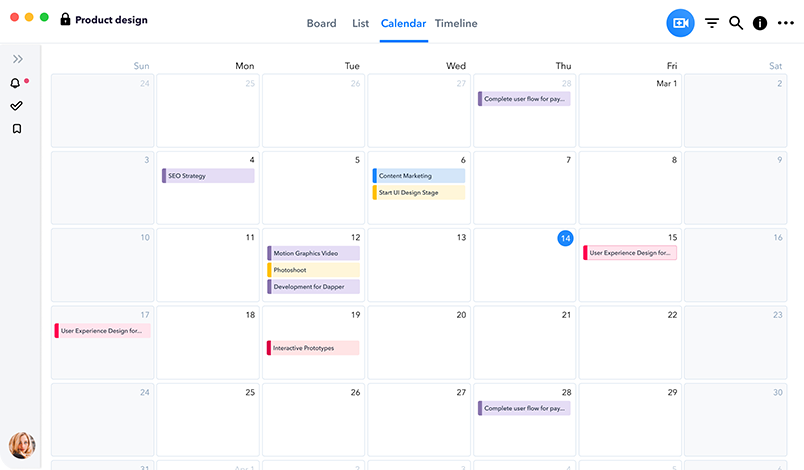As a creative agency, you spend so much time focused on deadlines and deliverables that it can be easy to overlook the goals and objectives of a project. But goals are vital for any organization and it’s important to setting creative agency project goals and objectives in order to establish processes to stick to and achieve them.
Establishing and achieving goals and objectives requires organization and management. You need to be able to clearly define what it is you are trying to accomplish and then assign tasks to achieve those goals.
Successful creative agencies know their goals. They understand that while their core area of creativity is subjective and a free-flowing process, it always needs to be set against larger project objectives.
These agencies don’t just have bottom-line targets. They have clearly defined benchmarks for all functions. Setting clear project goals and adhering to them is what helps them develop long-term relationships with their clients. Heycollab has identified these parameters by which you can set clear project goals and objectives for your agency.
 1. Project success
1. Project success
You should assess the number of projects finished every month, quarter, six months, and year. This helps you track your progress and reveals where you can improve. Along with the quantitative assessment, you should ask the following questions:
-
-
- Was the creative team properly briefed on the requirements?
- How long did the creative development last?
- Did you have enough resources for the project?
- What part of the project took you the longest?
- How fast were internal and external approvals?
-
2. Progress toward yearly goals
Each project you successfully complete should move you closer to your annual goals. Beyond that, you can strategically analyze what you want to achieve by the end of the year. Instead of focusing merely on projects and their tasks, this exercise allows all the stakeholders, particularly the creative teams, to see the big picture.
Regular reviews will help build collaborative relationships between the client-facing account management teams and those in creatives. Each domain will be able to understand the other’s objectives. These can also help streamline project development, reduce administrative bottlenecks, and put focus on productivity metrics.
Heycollab comes with Kanban task boards that show you the status of projects and tasks. You can assign tasks to users so they can easily understand their contributions to the larger agency goals and objectives. You can also delegate subtasks within the primary tasks to members. This helps break down bigger tasks into more manageable units.
 3. Resource needs
3. Resource needs
Resource evaluation shouldn’t be an annual affair. Creative agencies should regularly assess their resource needs against their projects for the rest of the year. While doing so, keep in mind the upcoming campaigns or events of your clients. For example, if a client is foraying into the multiverse, you might need to upgrade your software and hardware and get individuals with expertise in that domain.
Similarly, if a company is rolling out a new product, you might additional resources in the team managing that client. There could be more meetings and the client might need more marketing collateral. You can review your previous campaigns and identify the ideal team strength for such exercises.
4. Client satisfaction
What do all successful creative agencies have in common? Satisfied clients. To understand how your client perceives your agency, it’s important to reach out and formally conduct an interview or survey. This would also reveal why certain clients are approving projects fast while others take a while.
Repeatedly delivering the same work won’t increase client satisfaction. Through objective feedback, you would know if the client likes the creative output, finds account management individuals to be capable, is happy with the turnaround time, and is satisfied with the tech stack you use.
 5. External traction
5. External traction
Now, this isn’t something you would find elsewhere. But we at Heycollab believe that external traction should be a part of project goals and objectives for any creative agency. We define the concept of external traction as the influence your campaigns are able to create among consumers.
In the highly digitalized world that we live in, clients evaluate projects not just on their immediate effectiveness but their larger impact on the market. Creating work that resonates with consumers can help not just with existing clients but also encourage potential clients to work with you.
That’s why, while meeting all other criteria, a creative agency should also focus on delivering projects that can excite consumers and encourage them to share the work on social media.
In short
By setting clear project goals and objectives for your creative agency, you will create a more productive, efficient, and result-oriented system that will inspire team members to perform at their best.
______________
Heycollab is a project management tool built for teams like yours. With a free 14-day trial you can try out all the cool features. To get started visit https://heycollab.com/

